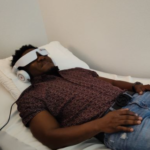Sound Therapy: An Emerging Trend in Wellness
In recent years, sound therapy has emerged as a powerful trend in the wellness industry, offering a unique approach to mental, emotional, and physical healing. Rooted in ancient practices but enhanced by modern technology, sound therapy is capturing the attention of wellness enthusiasts and healthcare professionals alike. Its popularity is driven by a growing demand for holistic and non-invasive methods to reduce stress, improve mental clarity, and promote overall well-being.
What is Sound Therapy?
Sound therapy involves the use of sound waves and vibrations to create a therapeutic effect on the mind and body. From ancient practices like chanting, drumming, and singing bowls to modern techniques involving binaural beats and vibroacoustic therapy, sound therapy leverages the power of sound to harmonize the body’s natural rhythms.
At its core, sound therapy works by stimulating the auditory and nervous systems, helping to regulate brainwave activity, reduce stress hormones, and encourage relaxation. The principle is simple: sound, when applied at specific frequencies, can help the body and mind achieve a state of balance and harmony.
How Does Sound Therapy Work?
Sound therapy works through several mechanisms, including:
- Brainwave Entrainment: By exposing the brain to specific frequencies, sound therapy encourages brainwave activity to sync with the desired state. For example:
- Delta waves for deep sleep and relaxation.
- Theta waves for meditation and creativity.
- Alpha waves for calm and focus.
- Vibroacoustic Stimulation: Vibrations delivered through specialized devices, like sound loungers or cushions, stimulate the body at a cellular level, promoting relaxation, circulation, and even pain relief.
- Chakra Balancing and Energy Healing: Many sound therapy practices, such as those using singing bowls or solfeggio frequencies, are designed to align the body’s energy centers (chakras) for emotional and spiritual well-being.
Benefits of Sound Therapy
The growing appeal of sound therapy lies in its wide-ranging benefits, including:
- Stress Reduction: Lowers cortisol levels and induces a deep sense of calm.
- Enhanced Focus and Creativity: Improves cognitive function and mental clarity.
- Emotional Healing: Provides a safe space for emotional release and processing.
- Improved Sleep: Promotes relaxation and helps individuals fall into deeper, restorative sleep.
- Physical Healing: Vibroacoustic therapy can reduce muscle tension, improve circulation, and support recovery.
Technological Advancements in Sound Therapy
Modern sound therapy combines traditional techniques with cutting-edge technology to enhance its efficacy. Devices like BrainTap, InHarmony sound lounges, and apps featuring binaural beats have made sound therapy more accessible. These tools integrate neuroscience with sound to deliver personalized wellness experiences.
Why is Sound Therapy Gaining Popularity?
Several factors contribute to the rise of sound therapy as a wellness trend:
- Growing Stress Levels: In today’s fast-paced world, people are seeking effective, natural solutions to manage stress and anxiety.
- Holistic Health Movement: Sound therapy aligns with the growing interest in holistic and integrative wellness practices.
- Scientific Backing: Research supporting the efficacy of sound therapy is making it a credible option for both wellness and healthcare.
- Accessibility: The availability of sound therapy tools and apps has made it easier for people to incorporate these practices into their daily lives.
Conclusion
Sound therapy is not just a passing trend—it’s a transformative approach to wellness that addresses the body, mind, and spirit. Its ability to reduce stress, enhance mental clarity, and promote physical healing makes it a powerful tool in the modern wellness toolkit. As more people embrace this ancient-meets-modern practice, sound therapy is poised to become a cornerstone of holistic health and self-care.
Whether through a meditative sound bath, binaural beats, or vibroacoustic therapy, sound is proving to be more than just a sensory experience—it’s a pathway to healing and harmony.

